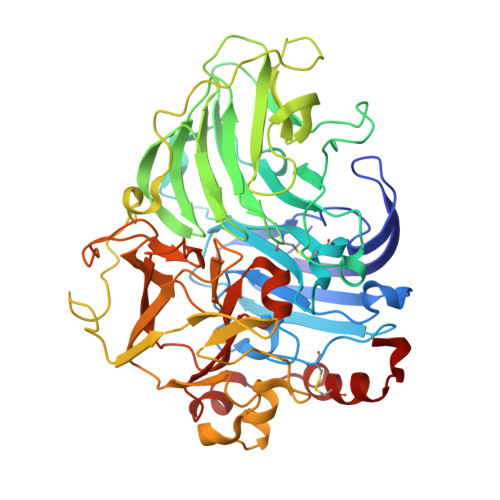Enhancement of laccase activity by pre-incubation with organic solvents.
Wu, M.H., Lin, M.C., Lee, C.C., Yu, S.M., Wang, A.H.J., Ho, T.D.(2019) Sci Rep 9: 9754-9754
- PubMed: 31278318
- DOI: https://doi.org/10.1038/s41598-019-45118-x
- Primary Citation of Related Structures:
5Z22 - PubMed Abstract:
Laccases that are tolerant to organic solvents are powerful bio-catalysts with broad applications in biotechnology. Most of these uses must be accomplished at high concentration of organic solvents, during which proteins undergo unfolding, thereby losing enzyme activity. Here we show that organic-solvent pre-incubation provides effective and reversible 1.5- to 4.0-fold enhancement of enzyme activity of fungal laccases. Several organic solvents, including acetone, methanol, ethanol, DMSO, and DMF had an enhancement effect among all laccases studied. The enhancement was not substrate-specific and could be observed by using both phenolic and non-phenolic substrates. Laccase preincubated with organic solvents was sensitive to high temperature but remained stable at 25 °C, for an advantage for long-term storage. The acetone-pre-incubated 3-D structure of DLac, a high-efficiency fungal laccase, was determined and confirmed that the DLac protein structure remains intact and stable at a high concentration of organic solvent. Moreover, the turnover rates of fungal laccases were improved after organic-solvent pre-incubation, with DLac showing the highest enhancement among the fungal laccases examined. Our investigation sheds light on improving fungal laccase usage under extreme conditions and extends opportunities for bioremediation, decolorization, and organic synthesis.
Organizational Affiliation:
Institute of Plant and Microbial Biology, Academia Sinica, Taipei, 11529, Taiwan, ROC.




















